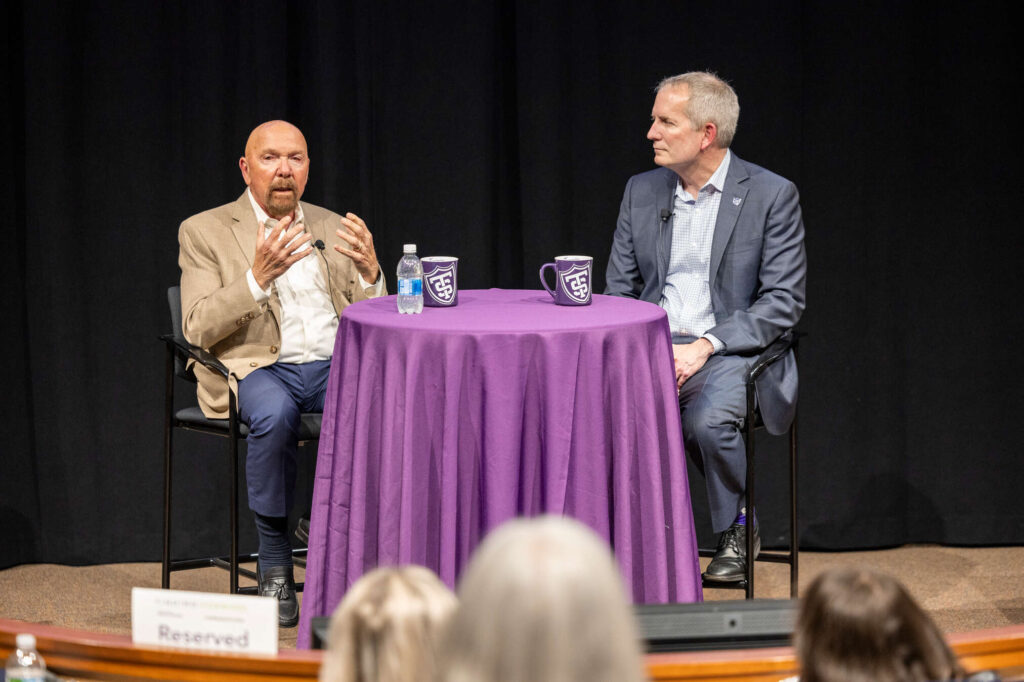When I was pondering what to study in college, my dad suggested I get a degree in business. He argued that no matter what I wanted to do, I’d always need to understand business. He was an architect and, in his limited free time, had to teach himself business so he could run his own firm. At that age I wasn’t in love with business, but I could see his point – it was a very practical choice. Never did I imagine I’d end up as a business school professor!
The first turning point for me was a class in consumer behavior at Wharton where I became fascinated with understanding why people thought, felt and acted as they did in the marketplace. But when my marketing research professor suggested I join their Ph.D. program, I thought the idea was crazy. Instead I went into management at The Four Seasons Hotel, where part of my responsibilities included overseeing the customer satisfaction surveys and internal glitch reports (how the hotel responded to service failures). It didn’t take long before I was again fascinated with understanding consumers – perhaps a Ph.D. program was right for me.
Now 20 years later, I still am fascinated with not only understanding consumers, but also how that understanding can enable more effective strategies and practices. After joining UST in 2007, I started researching word-of-mouth marketing with my colleague Dr. James Heyman.
Consumers have been talking with one another about products for as long as there have been products. When marketers finally realized that these personal recommendations were more credible than advertisements and other firm-based communications, they started finding ways to initiate the conversations. The most common technique involved providing everyday consumers with incentives (e.g., free products) and instructions about how to spread word-of-mouth. Early efforts were often categorized as stealth marketing, as message recipients were largely unaware that peer recommendations were being pushed by marketers. Ethicists loudly condemned these actions, but when James was researching how consumers perceived the fairness of a wide variety of stealth tactics, he discovered that undergraduates – the main age group being targeted – were largely indifferent. Our research then aimed to look at the intersection between ethics and efficacy.
The solution to the ethical issue was disclosure, which involved word-of-mouth agents revealing their relationship with the brand. Industry organizations such as the Word-Of-Mouth Marketing Association (WOMMA) advocated disclosure, and in 2009 the FTC began mandating disclosure. The problem was that agents were reluctant to disclose their relationship for fear of what their peers would think of them, and firms worried that disclosure would hurt their brands. So while disclosure removed the ethical dilemma, the technique’s effectiveness then came into question – was disclosure really harmful?
When we started this research project, James was teaching consumer behavior and I was teaching marketing communications. As such, word-of-mouth was a topic in both of our classrooms. One of our undergraduates expressed interest in our research and asked to do an independent study with me for a semester. The collaboration proved to be a win-win: She got experience conducting research and we got insights from her interviews with friends and classmates. These insights helped us create realistic word-of-mouth scenarios and develop hypotheses that we then tested in two controlled experiments.
Our findings indicated that disclosure of the agent-brand relationship during the word-of-mouth incident improved the effectiveness of the recommendation relative to no disclosure (i.e., seemingly organic word-of-mouth). More specifically, purchase consideration increased when the agent disclosed that they had received free product (e.g., a case of energy drink or a cellphone) and were asked to tell others about it.
Further, the disclosure caused study participants to feel more knowledgeable and evaluate the product more positively, which in turn increased purchase consideration. If you are wondering why, consider that the firm’s behavior – giving product as an incentive to generate word-of-mouth – might suggest the firm was confident their product was good, which reinforces a positive recommendation. Also consider that learning about a relationship between the agent and the firm might make the message recipient feel closer to the brand, similar to having insider information.
In contrast, we also examined what happened when an agent did not disclose his/her relationship with a brand and that relationship was discovered incidentally at a later time, for example through news media or agent recruiting messages. In this situation, we observed a decrease in the recommender’s credibility relative to situations when disclosure occurred concurrently or the recommendation appeared organic. Study participants also reported feeling deceived and rated the conversation as somewhat unethical. However, the primary negative impact was on the messenger and not the product, as purchase consideration and product evaluation were each relatively unscathed by the deception. This pattern is consistent with prior research findings that consumers process negative tactics separately from message claims. Taken together, the key take-away for marketers who use incented word-of-mouth is to ensure that their agents disclose the relationship in a truthful and timely manner for their mutual benefit.
This research was published in the Journal of Marketing Communications, 2013 (Volume 19, Issue 4) under the title “Honesty is the best policy: The effects of disclosure in word-of-mouth marketing.” Perhaps more importantly, the research has been incorporated into our teaching. With it, we are able to demonstrate to students the importance of understanding consumer behavior, how research enables that understanding, and how it can guide us toward marketing tactics that are both ethical and effective.
Associate professor of marketing Dr. Lisa Abendroth is faculty director of the university's Evening MBA Program.
From Exemplars, a publication of the Grants and Research Office.







